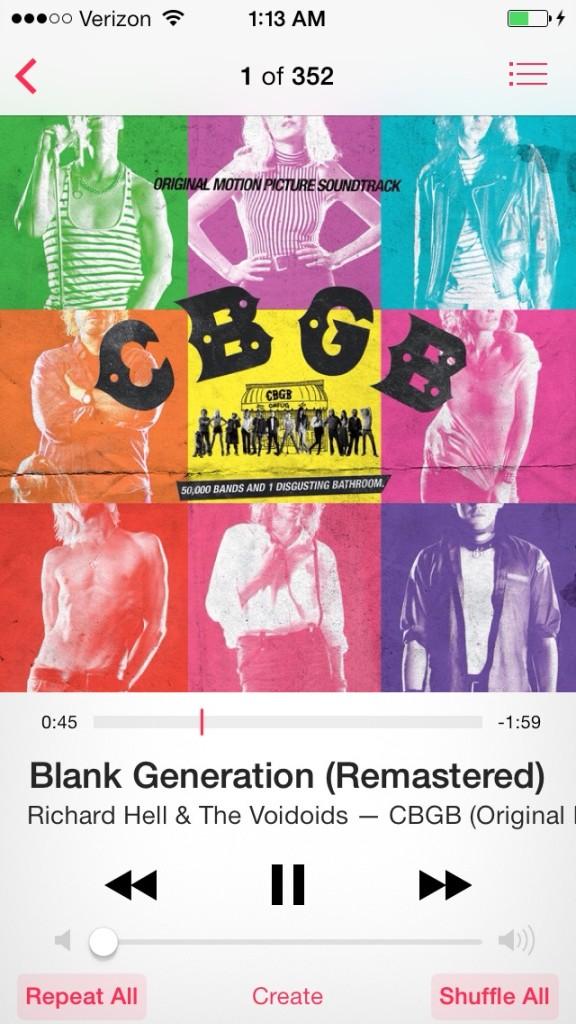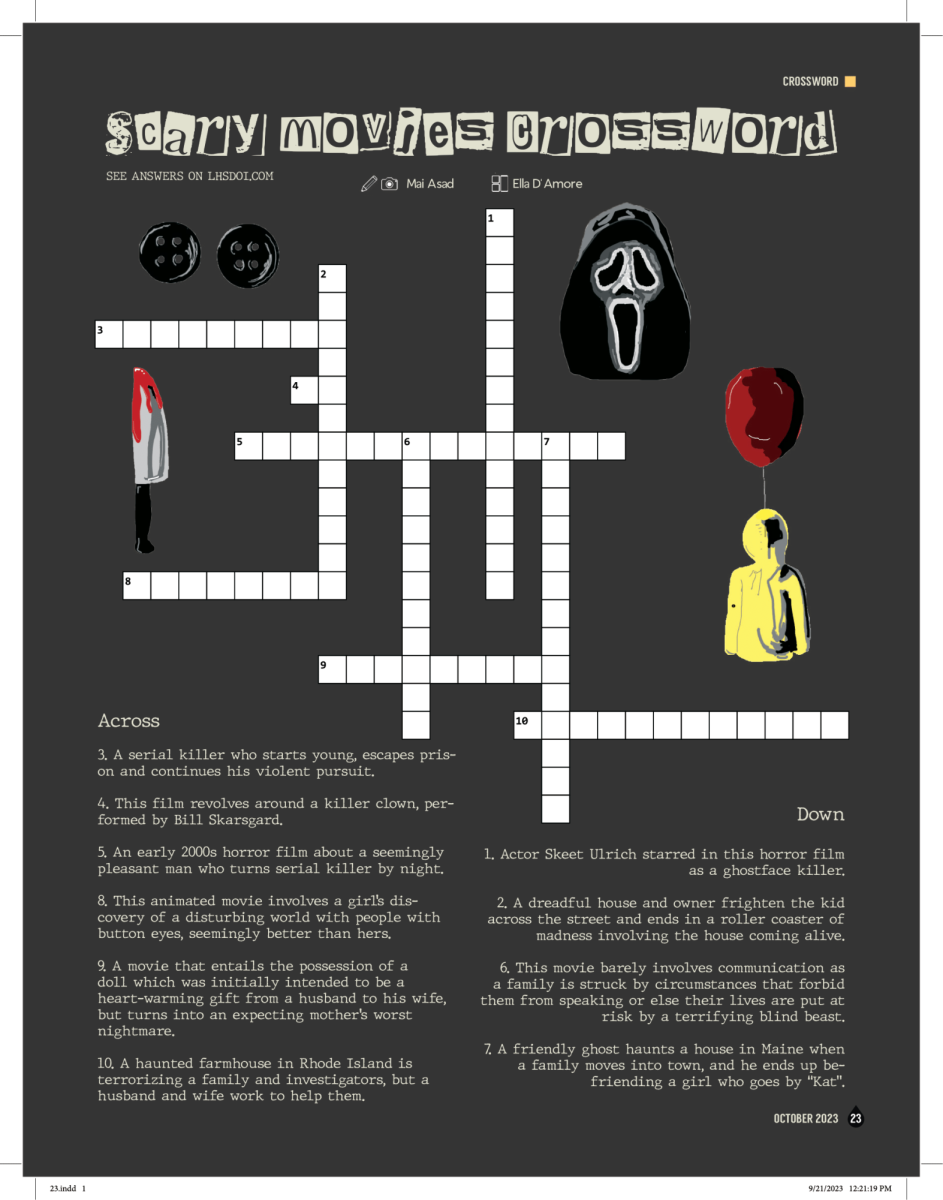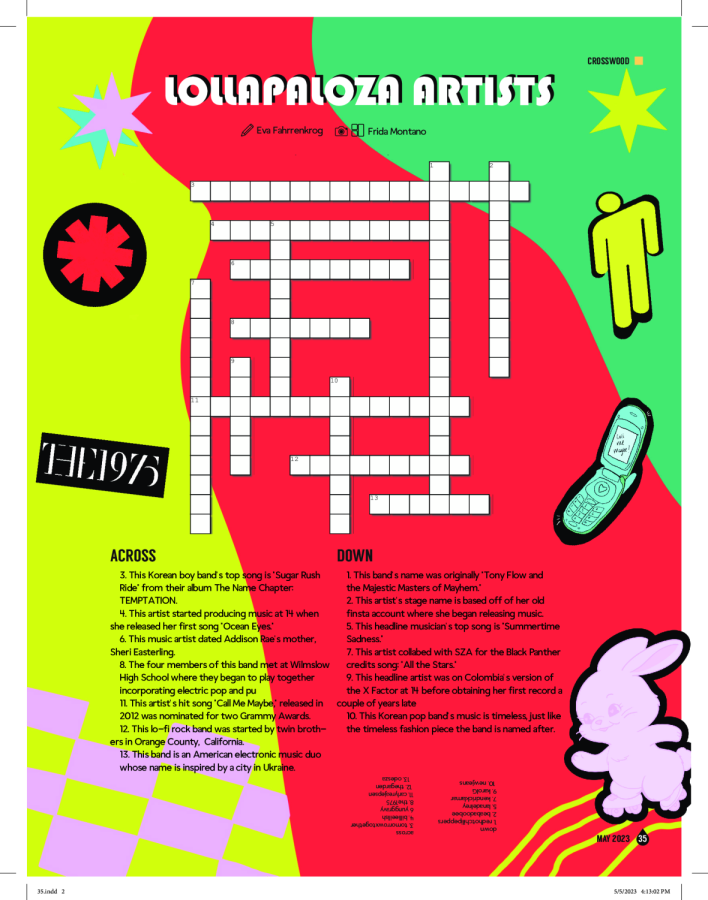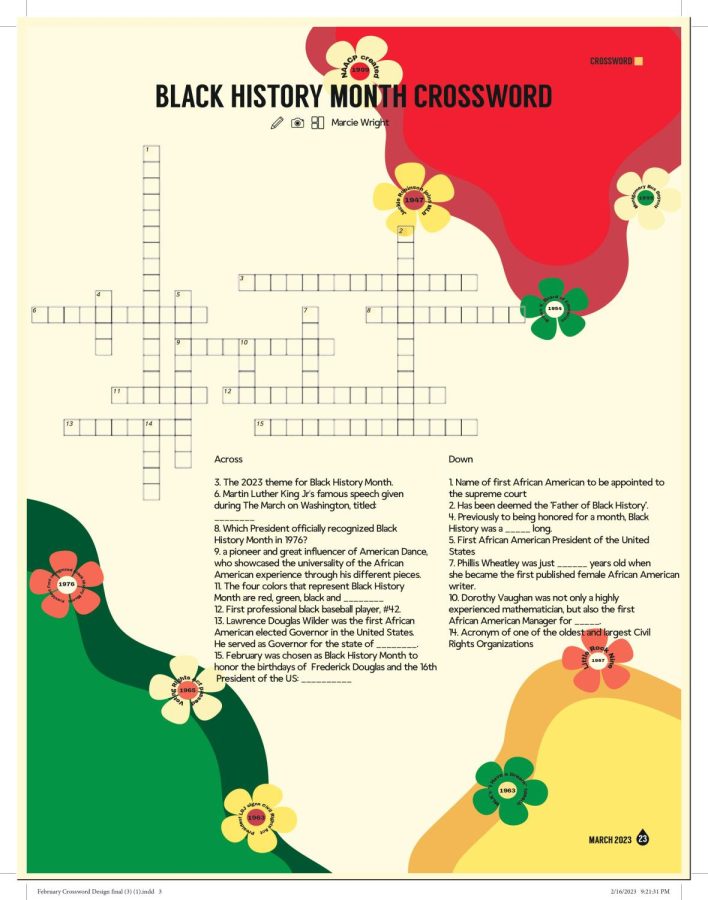For those who don’t know, CBGB (Country, BlueGrass, and Blues) was the (originally reluctant) New York City venue at which many famous punk/alternative bands got their start. Among the most well-known of its acts were Blondie, the New York Dolls, Talking Heads, Television, Patti Smith, and the Ramones.
A movie, CBGB, was recently made about the successful club; its soundtrack features the work of the aforementioned artists and others who performed there (with the addition of CBGB owner Hilly Kristal’s “Birds and the Bees”).
The explicit soundtrack is well-rounded with its inclusion of Devo and Talking Heads (representative of the alternative/ New Wave culture at CBGB) as well as the expected punk bands. The problem is with overrepresentation ‒ the Dead Boys and Tuff Darts both have more than one song on a 33-track album (fittingly long for the life and influence of the club), but some icons like the Ramones are neglected. That, and there are blatant mismatches such as the “California Sun” cover by the Dictators. As a movie (and soundtrack made to that movie) about the New York counterculture, a song about California (the rival of 1980s New York free spirits) was a poor (and at the very least incongruous) choice. Another interesting (and very Californian choice) was the inclusion of “Psychotic Reaction” by Count Five (a 1960s San Jose band). This seeming lack of understanding of the cultural and social circumstances under which CBGB became the phenomenon it is heralded as being, begs the question: was the music supervisor just grasping at straws, or were they limited by the music’s licensing?
“Life During Wartime” by Talking Heads redeems the soundtrack as its most famous line is “This ain’t no Mudd Club, or CBGB,” a line resulting from their attribution of success to the famed bar where they got their start. Lou Reed and the Velvet Underground, who also became popular because of the club, were a fortuitous and timely addition, as Lou Reed’s death devastated fans October 27, though for their contribution to the genre and venue, the Velvet Underground is underrepresented with only one song (the same amount that the Police have on the album).
Wayne County & the Electric Chairs emphasizes the era and genre’s central bands in their song “Max’s Kansas City” (*mislabeled on the soundtrack as another of their other tracks, “Out of Control”). While it’s not actually about CBGB, but rather Max’s Kansas City, the hangout of Andy Warhol and his Superstars, it mentions Patti Smith, the New York Dolls, the Ramones, Lou Reed, Iggy Pop, Blondie, the Heartbreakers, the Electric Chairs (the artist themselves), and the MC5.
Despite its obvious shortcomings as an album, the CBGB soundtrack is just broad enough to hit all possible aspects of the club for which the movie was named. Incorporating predictable artists and songs as well as some that were less expected, the album is balanced nicely (if a little too heavy on certain bands, including some that were less consequential) and is a joy to listen to straight through (nearly two hours). The sound overall is mellow for the reputation of CBGB’s biggest bands, but it maintains a lot of energy and personality throughout. Anyone with an interest in music history, punk or alternative genres, or a desire to hear a compilation of some of 1980s best New York bands should strongly consider spending the time to listen to the soundtrack from CBGB, though the movie itself might be a waste (but that’s just what the reviewers say).
*I contacted the music supervisor for CBGB, Mr. Brad Rosenberger, who said that Rhino Entertainment was actually in charge of putting the soundtrack together as an album, rather than Mr. Rosenberger’s own company, Omnivore Recordings. He put me in touch with Mr. Mike Engstrom of Rhino, and they are in the process of correcting the error that I brought to their attention.








